23 July 2013. Kiev, Ukraine. The plight of abused, abandoned and orphaned children in Kiev has changed considerably in the last 15 years. The transition has been from a large and highly visible population of children attempting to survive on their own on the street, with virtually no systematic resources to aid them, to a growing network of ministries and orphanages functioning in partnership with the government. Children living on the street are thankfully now rare. Yet the needs are still immense.
Street children in Kiev fled there from physical or sexual abuse, or homes afflicted with alcoholism or drug abuse. Others were abandoned by their parents. Glue sniffing by the kids was common as a means to temporarily raise the body temperature against the frigid winters. Street kids resorted to prostitution and street crime to survive. Life expectancies were short and life while it lasted was brutal.
The Former Government’s “Isolator”
The official governmental response and participation has itself evolved. Initially the government denied the problem existed. Then the government essentially arrested the children and brought them to its “Isolator.” The Isolator was a crude and cold internment facility lacking in any programmatic, educational, social or psychological resources. Both boys and girls’ heads were shaved to control lice. Clothes, toys, books and other resources were nonexistent. Dormitories were not segregated for boys and girls, with predictable results. In a usually futile attempt to achieve order the staff resorted to beatings. Children often attempted escape and frequently succeeded.
The Call to Rescue Street Kids
In 1998, God put it on Bruce’s heart that he was to reach out to children at risk. Bruce was an accountant and an entrepreneur that had developed software companies, not a social worker or teacher. But the call was clear.
Bruce and Anne’s Pastor at their church in Vancouver spent time in Kiev and reported back about the plight of street children in Kiev. Bruce was absent that Sunday. But when he heard about the message he knew this was where he was called.
Bruce and Anne, and soon their daughter Sarah, began making many trips to Kiev. Later Sarah, who is trained as a teacher, would spend a year and half living full-time in Kiev working with the children.
Ezra International, and its Division of Ministry to Children
Bruce and Anne began working under the umbrella of an established Christian humanitarian organization, Ezra International. Ezra International’s primary mission was and continues to be to assist Jews living in the former Soviet Union to migrate to Israel. Bruce and Anne have formed a separate division of Ezra International now known as the Children’s Rescue Center.
The Children’s Rescue Center began by contacting directly children on the street, offering food and blankets, and literally trying to persuade them to come in out of the cold. Children’s Rescue Center volunteers, and then staff, began spending time in the government’s Isolator attempting to bring care to the children housed there. Gradually the outside volunteers from Children’s Rescue Center were given more influence as the trust and confidence in them increased. They were able to bring a humanitarian, programmatic and Christian contribution. Donors provided books, clothing and other resources. At one turning point, at no small risk to herself, Sarah confronted one of the workers who was infamous for her beating the children. Sarah insisted never again. The next director got rid of the abusive workers and she is herself kind-hearted.
The Current Government Children’s Shelter
Over the past 15 years the government has dramatically improved and expanded its children’s shelter. It is now truly a warm, clean and receptive facility. The Isolator is now closed.
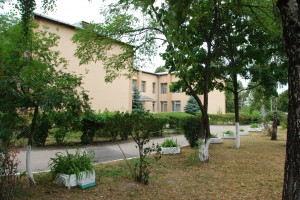
Government Shelter
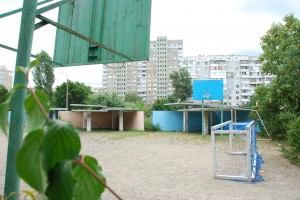
Government Shelter
The government shelter is not an orphanage per se; children generally stay only nine months. They are then transferred to orphanages or shelters in the regions of Ukraine from where they originated. The concept of foster families is just now being newly implemented.
While the government provides staff in its shelter, it relies on Children’s Rescue Center for social services. Children’s Rescue Center staff field phone calls from the police, family members and others reporting abuse or children at risk. Children’s Rescue Center operate its own rescue center within the shelter. The Children’s Rescue Center staff do home visits, and are the social workers managing the case files for children identified at risk, both those brought into the government shelter and those still in their homes.
Children’s Rescue Center staff attempt to keep children in their homes if it is safe and viable to do so, and offer in-home support. If the Children’s Rescue Center staff reach the conclusion that a child’s welfare requires removing the child, that recommendation is forwarded to the governmental officials who make the decision. Removals are carried out by the government with police intervention.
Children’s Rescue Center
Children’s Rescue Center consists of five staff. The director is Vera Skarina. Vera is an amazing, dedicated and resourceful lady – and a fearsome soccer player. Vera has a warm, gentle, engaging personality. But do not mistake that kindness for passivity. Vera attended law school to become an advocate for children in court. She has organized a youth soccer league. She is planning a boys and girls club.
Natasha is the lead psychologist and social worker. Natasha conducts the Rescue Center intake interviews and supervises the other two social workers, Lena and another Natasha. (It seems every third female in Ukraine is named Natasha.) Phillip rounds out the team as the ministry’s driver, and also supports the mission with home visits.
Our team in Kiev had the privilege of spending time with two groups of children in the government shelter. The first group was about 12 kids, mostly girls and a couple of boys, and mostly about ages 7 to 10.
Volva is nine years old, but is small and looks more like six. His parents were candidly described as drunks. Volva hopped a train from northern Ukraine and arrived at the Kiev train station where the police spotted him and brought him to the government shelter.
I was sitting next to Volva and offered him a puzzle of about 24 pieces. He was immediately interested. In the puzzle. But not in me. With an affect that reminded me of autism, Volva focused intensely on the puzzle. My suggestions and contributions were not rebuffed, but they were not received. At that young age Volva had somehow mastered gently shutting people out without being overtly rude or aggressive. It was as if I did not exist.
Volva finished the puzzle, to the amazement of Sarah who thought he had probably never been to school, and moved over to make a bead necklace with George. Volva engaged with the same quiet intensity, but with slightly more openness to George’s participation. George’s placing the finished necklace around Volva’s neck actually produced a smile, the first from Volva of the day we had seen.
Volva has a rough road ahead. On top of having run away from alcoholic parents at a very young age, he is a Gypsy. In this culture, discrimination against Gypsies is endemic and institutionalized. They are deprived of birth certificates and mandatory papers required for travel within the country. Medical care and social services are not available to them. Harsh prejudicial treatment is the norm.
There is some hope for Volva in the care at the shelter if a previous example can be repeated. Another young gypsy boy was tormented by his peers, by one in particular. The kids literally peed on him. But the one peer who was most hostile was coached about loving like Jesus. The soon result was at a face painting event the formerly hostile peer asked to have his face painted brown so he would look like his new Gypsy friend. Thus the mission is not just to rescue kids from circumstances, dark as they may be, but also from the universally depraved human heart which needs rescue and redemption.
One young woman at the shelter was age 16. At first I mistook her for one of the staff. But while the younger children were enthusiastically engaged in the crafts and games we had brought and the staff were assisting, Anna sat by herself on a couch, sullen and withdrawn. We learned she was unhappy at least in part because others her age were away at camp. We did not learn why she was not with them. But all indications were this teenager’s idea of a good time was not doing crafts with primary grade age children and middle-aged Americans. What a surprise.
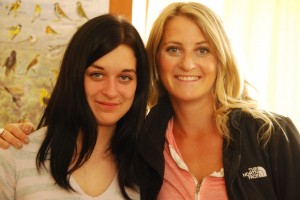
Anna and Sarah
I ventured over and asked Anna if she would like to see pictures of my family. She was surprisingly interested and as we went through the pictures she was increasingly engaged. Sarah helped translate. In the fifteen or so minutes we had before our next stop, we actually got a smile. A small but meaningful success.
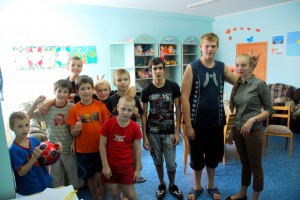 Next we visited a dorm for about 9 preteen and teenage boys. The energy and enthusiasm were everything one would expect. Some were engrossed in a version of Monopoly (Ukrainian? Russian?) with only a loose regard for the rules. There was a lot of interest in California. The boys were hungry for attention and affection, and it was easy to engage with them. The two staff workers, a man and a women, demonstrated a remarkable sense of equilibrium, keeping good order without being controlling. That is no small task for that age demographic regardless of country or home of origin.
Next we visited a dorm for about 9 preteen and teenage boys. The energy and enthusiasm were everything one would expect. Some were engrossed in a version of Monopoly (Ukrainian? Russian?) with only a loose regard for the rules. There was a lot of interest in California. The boys were hungry for attention and affection, and it was easy to engage with them. The two staff workers, a man and a women, demonstrated a remarkable sense of equilibrium, keeping good order without being controlling. That is no small task for that age demographic regardless of country or home of origin.
Home Visits
We ended the day before heading north to the camp with two home visits. The mothers in these two homes had given advance permission for Bruce, George, Sarah and me to accompany Natasha.
In the first of these homes we visited Violet, about 7 months old. She slept peacefully the entire time we were there. Her mother is pregnant. Her older sister has been taken from the 3-room apartment (that’s three rooms, not three bedrooms) because there were 30 people living there and doing drugs. Violet’s mother was warned that Violet would be taken, too, if the numbers were not brought down. The census has been reduced to about 12.
The mother is a Gypsy. Prenatal care and delivery care are not automatic but will probably be available because the father is not a Gypsy and has papers.
The apartment is deplorable. There are cockroaches. The wallpaper is ancient and peeling. “Light and bright” does not come to mind. Yet there is an earnestness and decency about the Mom, and peacefulness about sleeping Violet. This strikes me as just the place where Natasha’s regular intervention can do measurable good, for Violet, and her dozen roommates.
The next visit is more distressing. The aroma is overpowering for George and he soon excuses himself. Although it is 3:00 in the afternoon, and the mother had given advance approval for our arrival, she is still in her bathrobe, her two-year-old daughter Diana is naked, and her one-year-old daughter Anna Marie is only in a diaper. The hide-a-bed is out and bed-clothes are in disarray, as is most of the apartment. A teenage boy is watching cartoons. He soon leaves. A random man appears from one of the rooms and disappears out the front door. I never learn who he is or his connection there.
Diana needs surgery on her mouth. She is not able to eat or speak properly. But there is no money for that. There is not any food in the apartment.
Diana’s mother relates a story of her husband’s suicide, and her brother-in-law’s absconding with many of their meager possessions. She is believed to be involved in drugs.
We bring a little candy, which the girls are excited about. One sticky piece falls on the filthy carpet, incorporates some of the environment, and is quickly consumed with its new constituent parts by Anna Marie. Her mother is oblivious.
I do not understand the Russian words being spoken, but it is clear that Natasha is leaning in to the mother hard. “Get some clothes on Diana!” I imagine are some of the words, because that is soon the result, at least a pair of shorts. Diana’s mother finally steps out to get dressed, and leaves with Natasha for the grocery store to get a little food. Intervention in this home is very needed. Removal of the girls is being considered, but that is always a hard decision. Removing the girls from these circumstances must be weighed against the trauma of separation from their mother.
Praying hard for Diana, Anna Marie, Violet, their mothers, and their families. My heart breaks for these little girls who need so much more than they are receiving. I think about my own precious grandkids, and how vulnerable are all young children. So grateful for Natasha and the other staff who are directly touching these kids and their families.
The Ezra Ministry to Children has about 60 open case files. In a city of at least 3 million people. One can do the math. On one hand, there is so much to celebrate. Stay tuned for the story of Sasha, for example. On the other hand, the continuing need is immense. Praying to the Lord of the harvest to send workers.
Bound for Camp
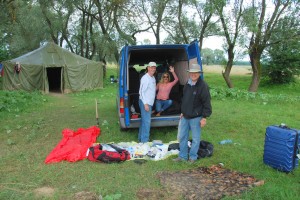 As the day draws to a close, we are several hours behind schedule. It does not matter. The plan had been to leave the city for the camp in northern Ukraine in time to set up tents before dark. That will not happen. Our van will slosh down muddy two-track lanes in the dark and arrive after everyone at camp is in bed. An earlier departure was a good plan, but spending the time to be with Volva, Anna and the other kids at the government shelter, and to journey alongside Natasha in the home visits to Violet, Diana and Anna Marie has been so much more than worth it.
As the day draws to a close, we are several hours behind schedule. It does not matter. The plan had been to leave the city for the camp in northern Ukraine in time to set up tents before dark. That will not happen. Our van will slosh down muddy two-track lanes in the dark and arrive after everyone at camp is in bed. An earlier departure was a good plan, but spending the time to be with Volva, Anna and the other kids at the government shelter, and to journey alongside Natasha in the home visits to Violet, Diana and Anna Marie has been so much more than worth it.
I’m intentionally telling this story slightly out of order. The events described above of today follow yesterday’s visit to Father’s House. But to understand Father’s House, it is helpful to first have learned about Ezra’s Ministry to Children and the government shelter. So the next posts will about Father’s House, Sasha’s story, and a very exciting burgeoning worldwide movement. And then we will get back in sequence to talk about the Camp and True Beginnings Ranch (have I mentioned that yet?).
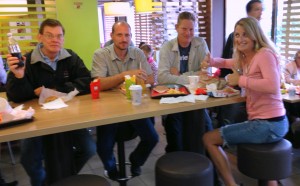 But before we get on the road, there is one last urgent piece of business. McDonald’s. The Last Supper. Our last contact with flush toilets. Before camping in the wilderness for five nights and four days.
But before we get on the road, there is one last urgent piece of business. McDonald’s. The Last Supper. Our last contact with flush toilets. Before camping in the wilderness for five nights and four days.
Then off for a 3 ½ hour drive that turns out to be 6.
~~~

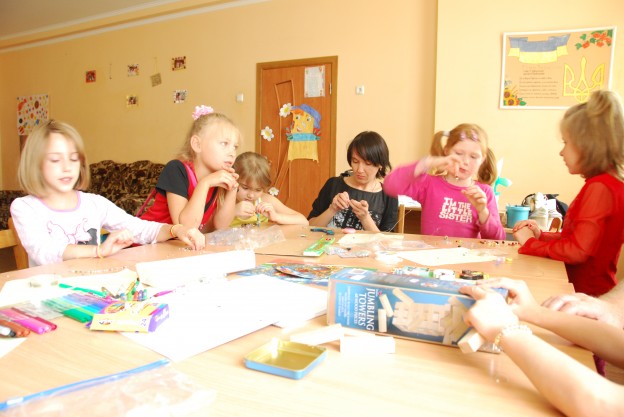




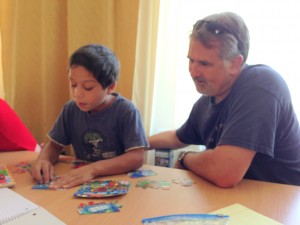
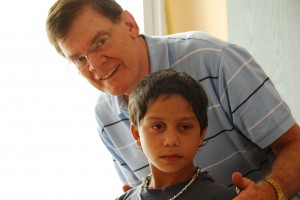
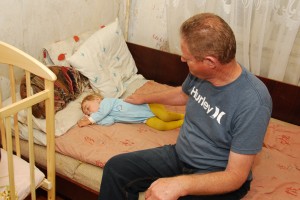
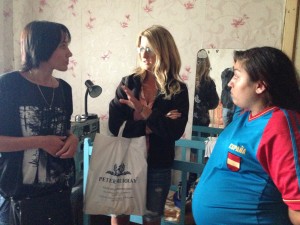
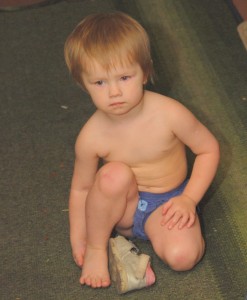
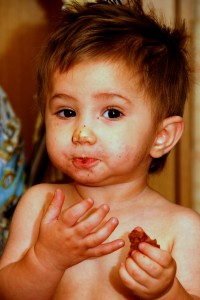
Awesome & amazing work you guys! 🙂 Always happy to see it, but still breaks my heart too. 🙂
Thank you Duane, not only for making the trip, but for detailing the events and the lives as you are doing.